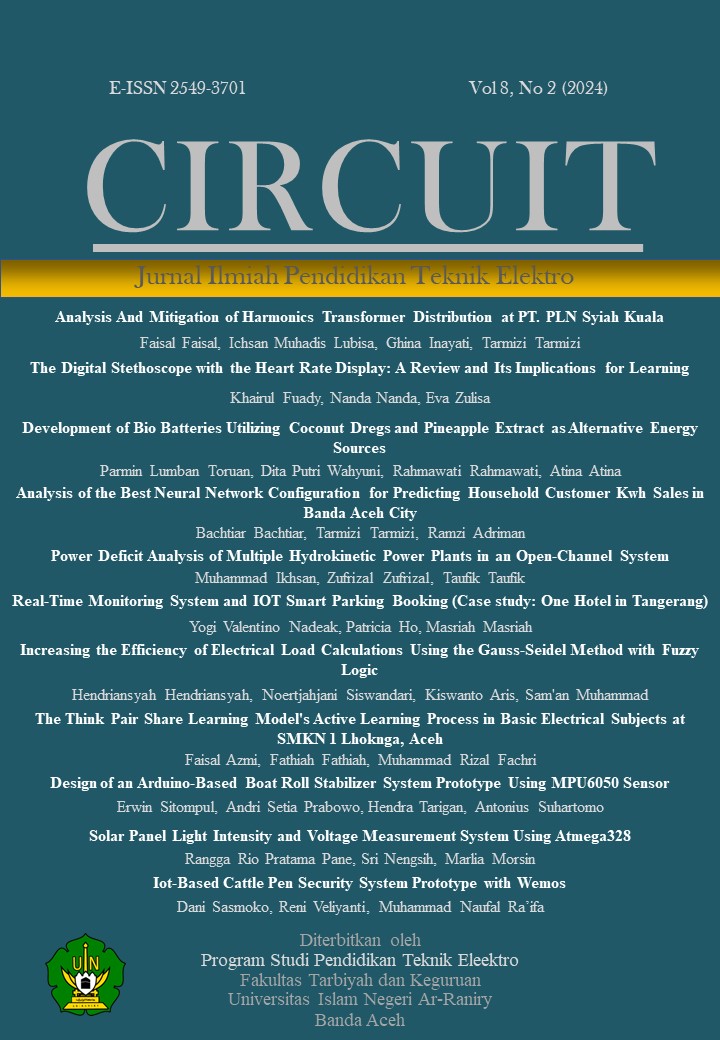Analysis And Mitigation of Harmonics Transformer Distribution at PT. PLN Syiah Kuala
DOI:
https://doi.org/10.22373/crc.v8i2.19662Keywords:
Transformer, Harmonic, THD, Passive FilterAbstract
Customers receive their electricity from distribution transformers; a disturbance will interfere with this process. High harmonics are typically the source of issues in distribution transformers. The distribution transformer at PT. PLN (Persero) ULP Syiahkuala has two issues: the neutral cable breaking and the main or secondary winding burning. Analyzing harmonics in distribution transformers at PT PLN (Persero) ULP Syiahkuala is the goal of this study. The goal of this study is to measure, examine, and assess the transformers at Syiahkuala ULP in order to select the best mitigation. One transformer's harmonic values were determined by the measurement findings to be out of compliance with requirements, necessitating the use of a variety of passive filters to reduce themThe results of THDi reduction using a passive filter are the values obtained for each phase R, S, and T. These values are in accordance with the established standards. From the results of harmonic mitigation using a passive filter, the results obtained in accordance with the THDv and THDi standards based on IEEE 159-2014 are 8% and 10%, respectively.Downloads
Published
2024-05-19
Issue
Section
Articles
License
Authors who publish in CIRCUIT: Jurnal Ilmiah Pendidikan Teknik Elektro agree to the following terms:
- Authors retain copyright and grant the journal right of first publication with the work licensed under a Creative Commons Attribution-ShareAlike 4.0 International License (CC BY-SA 4.0) that allows others to share and adapt the work with an acknowledgement of the authorship and initial publication in this journal
- Authors are able to enter into separate, additional contractual arrangements for the non-exclusive distribution of the journal's published version of the work (e.g., post it to an institutional repository or publish it in a book), with an acknowledgment of its initial publication in this journal.
- Authors are permitted and encouraged to post their work online (e.g., in institutional repositories or on their website) prior to and during the submission process, as it can lead to productive exchanges, as well as earlier and greater citation of published work. (See The Effect of Open Acces)

